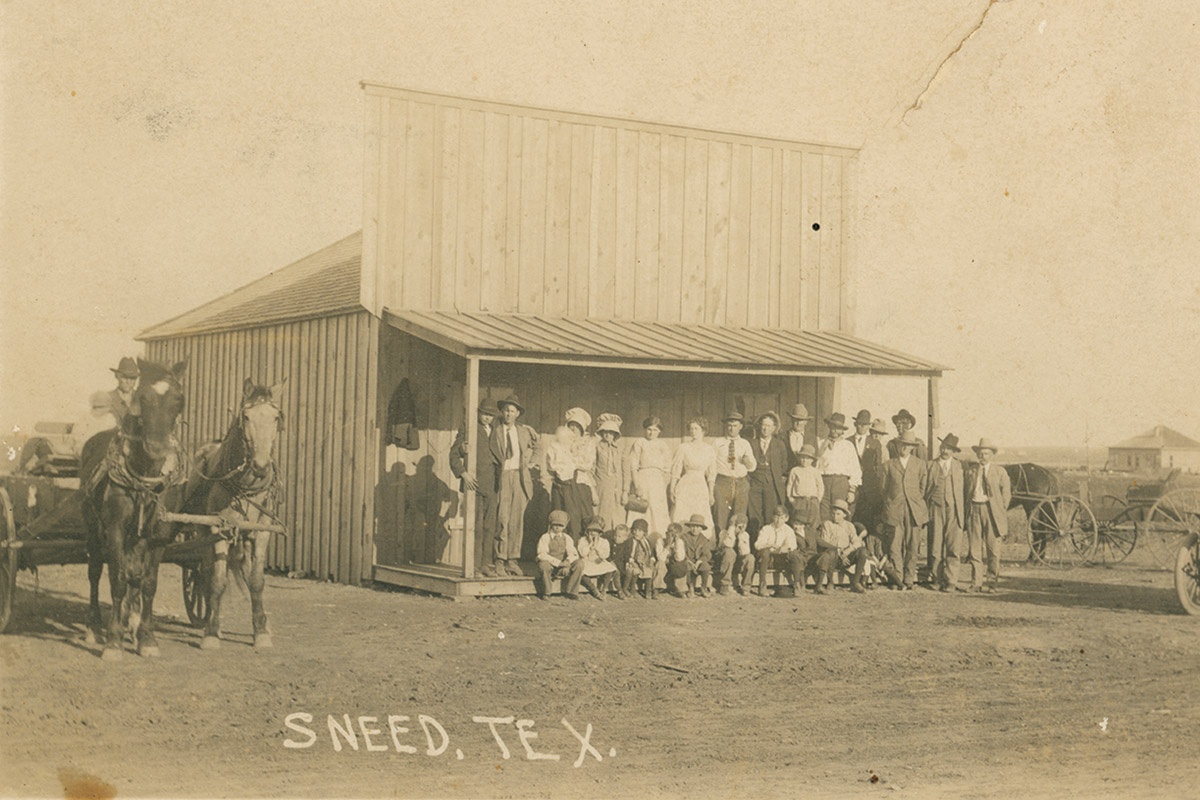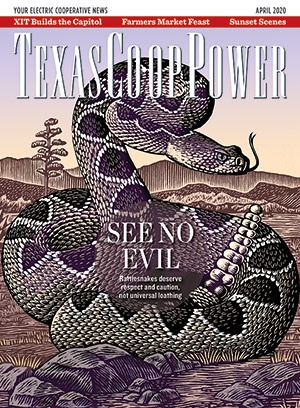Family stories, filtered through a forest of genealogy and oral tradition, often have a way of teaching us more history than scholars and their books. My late grandmother often told stories about a West Texas ranch on which she and my grandfather worked in the early 1910s.
The ranch, near Paducah, was owned by Beal Sneed. One of my great-uncles, Beech Epting, worked for Sneed as a tenant farmer. One day, Sneed’s wife, Lena, ran off with Albert Boyce Jr., the son of a former XIT Ranch manager. The resulting feud connected two wealthy Texas families in an affair that bloomed into a torrid, frontpage scandal that would result in several deaths. My grandmother’s stories explained how Epting got caught up in the drama.
Sneed and Boyce had each sought Lena’s affection when all three were students at Southwestern University in Georgetown. Sneed married her, but she declared her love for Boyce in 1911, so Sneed placed her in Fort Worth’s Arlington Heights Sanitarium for moral insanity, a dubious diagnosis even a century ago.
Upon release, Lena fled to Canada with Boyce but later returned to Texas and rejoined her husband.
So aggrieved was Sneed that he shot and killed Albert Boyce Sr. in Fort Worth’s Metropolitan Hotel in early 1912. Sneed believed that the elder Boyce had assisted his son in breaking up the Sneed home.
That March, Sneed’s own father was murdered by a tenant farmer whom Sneed believed was connected to the Boyces. In September, Sneed asked Epting to accompany him to Amarillo to close out some business affairs. Because he believed the Boyces were intent on revenge, Sneed told Epting the two needed to travel incognito.
It turned out that Sneed’s business in the Panhandle was the removal of Al Boyce Jr. from this world with blasts from a 12-gauge shotgun. Sneed was charged with murder, and Epting was charged as an accomplice.
After each killing, Sneed promptly turned himself in to authorities. The trials resulting from the murders generated reams of newspaper copy and inflamed emotions to a fever pitch. According to an account in the Handbook of Texas, at least four men died in disputes related to the first trial, held in Fort Worth, and women dueled with hatpins in the courtroom and the courthouse halls.
A hung jury in Sneed’s first Fort Worth trial for the murder of Boyce Sr. resulted in a mistrial, and Sneed was acquitted in both of his subsequent murder trials, held in Vernon and Fort Worth. The Vernon jury only needed three minutes of deliberation to find Sneed not guilty of killing Boyce Jr. A jury in the Panhandle town of Memphis took a half-hour to liberate Epting from an accomplice-to-murder charge.
Followers of the sensational cases in other states expressed dismay that a man could be excused for two coldblooded murders. The foreman of one jury, when asked how his peers reached the verdict, replied, “Because this is Texas.” An unwritten law, he and others argued, allowed a man to protect the sanctity of his home and marriage by any means necessary.
I first learned of these events in Epting’s life in the early 1980s. By then, most of the family members who knew anything about the Sneed matters had passed on.
Intrigued, I dug up what I could find and published an article in a Western magazine.
I didn’t learn much about the senior Boyce then, but in researching a story about the XIT, I came to see him as an important and admired figure in Panhandle history.
Then I connected with Clara Sneed, a writer and researcher from Berkeley, California.
A descendant of Beal Sneed, she had much more information about the events, though her family members—like many Texans who had some connection to the saga—had been reluctant to discuss the tragic story. In her account, published in the Panhandle-Plains Historical Review, Clara described the lingering discomfort in the decades after the killings. “I am told,” she wrote, “that one could not be friends with both families: One had to choose sides.”
Writer and author Gene Fowler specializes in art and history.


